How Long Should Asphalt Cure Before Painting? – Quick Guide
The duration for allowing asphalt to cure before applying paint is a vital consideration in preserving both the aesthetic appeal and functionality of your recently installed asphalt driveway. This is particularly important if you seek to enhance the visual appeal of your commercial space.
For optimal results, curing time is vital before painting asphalt. In hot summer conditions, a minimum of 30 days is recommended. Cooler, mild temperatures may necessitate a longer wait. Remember, the paint type also influences the curing duration. Rushing the process can lead to peeling and asphalt damage. It’s about balancing aesthetics with the practicality of your pavement’s health.
Explore further to understand the nuances of asphalt care and painting, ensuring longevity and visual appeal for your business space.
What is the process of asphalt curing?
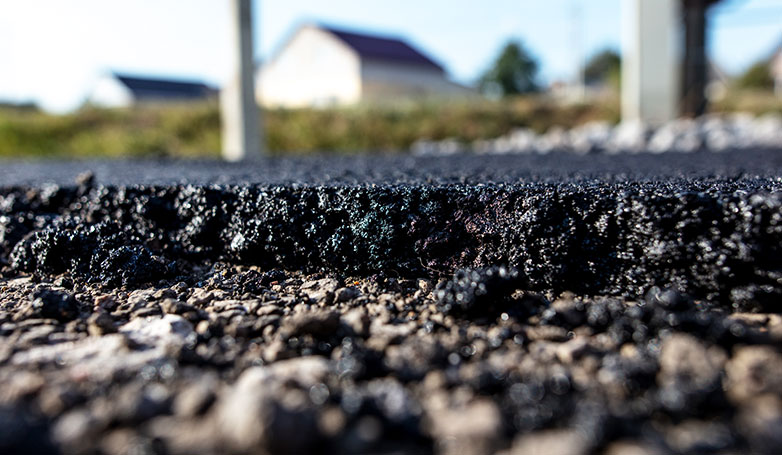
Asphalt, when first laid, presents a rich, black appearance that is not just about aesthetics but also speaks to its composition. This dark hue is due to the high oil content in the asphalt, which is essential for its flexibility and durability. However, as time passes, this appearance begins to change, marking the beginning of the asphalt’s curing process.
Oxidation: The Natural Aging of Asphalt
The transition of asphalt from black to a more grayish tone is the result of an oxidation process. This change is primarily caused by the sun’s rays affecting the asphalt surface. Oxidation is a natural phenomenon where the asphalt loses some of its oil content over time. While it may seem like a negative aspect, this process is actually beneficial. New asphalt is often too rich in oil, making it overly soft and vulnerable to damage.
Why Oxidation Matters for New Asphalt
In its initial stages, the excess oil in new asphalt can lead to issues like “power steering tear.” This problem occurs when sharp turns of a vehicle’s power steering literally scratch up parts of the new asphalt surface. It’s a common concern in residential driveways and parking lots where tight navigation is frequent. This sensitivity of new asphalt underscores the importance of the oxidation process, which gradually hardens the surface, making it less prone to such damage.
Timing Your Asphalt Painting: A Matter of Patience
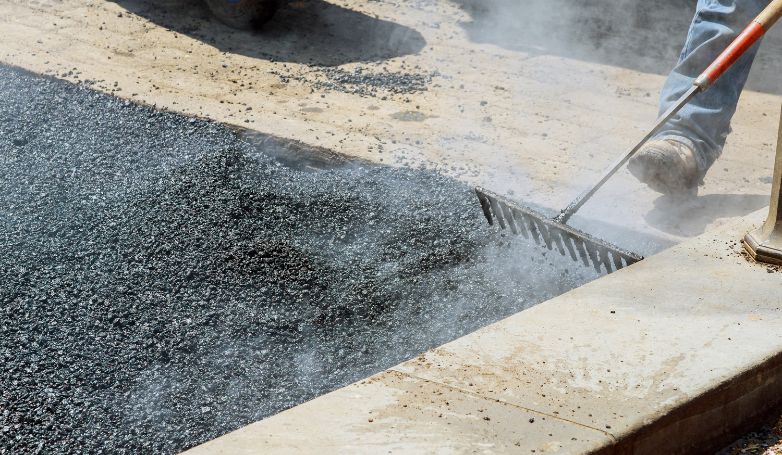
Understanding the oxidation process is crucial when deciding the right time to paint your asphalt. Painting too early, while the asphalt is still replete with oil and soft, can result in poor paint adherence and eventual peeling. As the asphalt cures and its color lightens, it becomes more suitable for painting. This color change is a natural indicator of the reduced oil content and increased readiness for painting.
Considerations for Different Climates
The rate at which asphalt cures and becomes ready for painting is significantly influenced by the temperature. Hotter climates accelerate the curing process, whereas cooler conditions slow it down. This variance in curing rates must be considered when planning to paint your asphalt to ensure the best possible outcome.
Why does asphalt need to cure?
It is recommended that you give a bit of time for your new asphalt to cure appropriately. This process’s final aim is to have an enhanced aesthetic appeal residential driveway or commercial parking lot that will last for an extended period.
Of course, you may want to be tempted to use your pavement immediately after it is installed, but you should also consider the implication of doing that. Allowing asphalt pavement to cure appropriately has lots of advantages, which include but are not limited to the following:
- It makes it last indefinitely
- Allowing asphalt to cure gives it the flexibility to withstand occasional overloads without severe damage.
- If asphalt cures properly, power steering gauges will not result when you turn the car wheels sharply on the pavement
How long does it take for asphalt to fully cure?
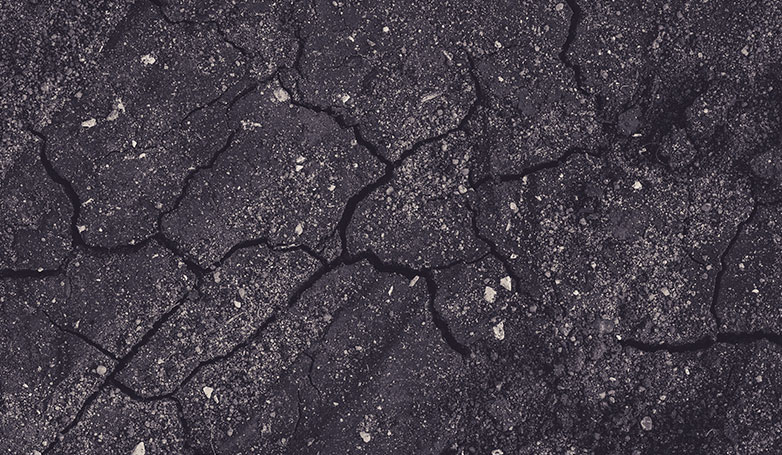
Before delving into the specifics of asphalt curing time, it’s important to distinguish between ‘cure time’ and ‘dry time’ for asphalt. Cure time refers to the period needed for the asphalt’s molecular fusion and oxidation, while dry time indicates when the new asphalt can withstand foot and vehicle traffic without significant damage. This distinction is crucial in understanding when it’s appropriate to use and maintain your new asphalt surface.
Asphalt Dry Time and Weather Considerations
The dry time for asphalt is heavily influenced by weather conditions. For instance, intense heat can slow down the drying process, causing the asphalt to soften before it fully cures. In such scenarios, applying water can be beneficial. However, it’s generally advisable to avoid asphalt repairs in temperatures exceeding 100 degrees Fahrenheit, as extreme heat can adversely affect the asphalt’s drying and curing process.
The Full Curing Process of Asphalt
When it comes to the full curing of asphalt, patience is key:
- Typically, new asphalt takes about one year to cure completely. This, however, does not mean your driveway or parking lot must remain unused for this duration.
- For the first month, avoid parking heavy trucks or placing heavy equipment on the new asphalt to prevent damage.
- While you can walk on the new asphalt pavement immediately after installation, it’s best to keep vehicles, people, and pets off it for at least three days, extending to more in hotter temperatures.
Post-Cure Characteristics of Asphalt
Even after asphalt has fully cured, it’s essential to remember that it won’t be as hard as concrete. This inherent characteristic of asphalt requires a different approach to its use and maintenance. Regular monitoring and maintenance are necessary to ensure its longevity and functionality, especially in areas with heavy vehicle traffic or extreme weather conditions.
How is asphalt painted?

Painting asphalt, whether for aesthetic enhancement or for maintenance, involves a series of crucial steps. The type of paint used, whether water or oil-based, can vary, but the process remains largely the same. Here’s a breakdown of the key stages in painting asphalt.
Step 1: Cleaning the Asphalt Surface
The first step in any asphalt painting project is thorough cleaning. This involves removing large debris and power washing the pavement to ensure the surface is free from dirt, dust, and any other contaminants. Proper cleaning is essential for good paint adhesion and to prevent future issues with the paint job.
Step 2: Ensuring a Pristine Surface
After the initial cleanup, further cleaning with a pressure washer or a hose with a high-powered nozzle is necessary. This step ensures that all remaining dirt and dust are completely cleared from the asphalt. Once this is done, it’s important to allow the asphalt to fully dry before proceeding to the next step.
Step 3: Repairing Cracks and Seal Coating
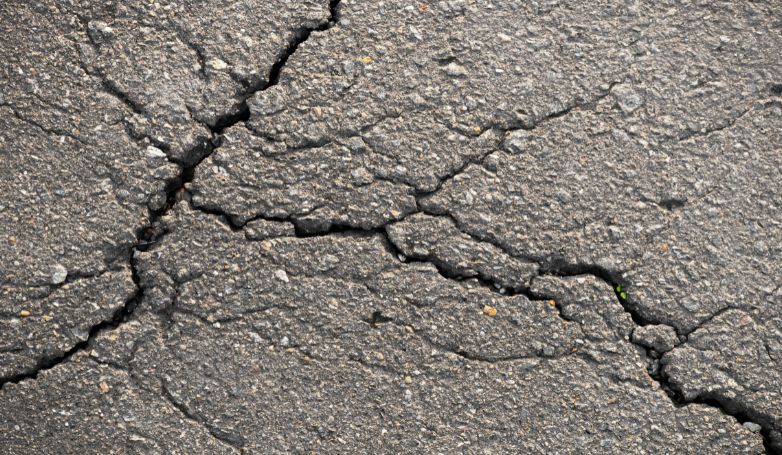
Before painting, it’s critical to address any structural issues with the asphalt. This includes filling in any cracks and resolving seal coating problems. These repairs are crucial for a smooth and even painting process, as they prevent future deterioration of both the asphalt and the paint.
Step 4: Priming the Asphalt
Safety and preparation are key in this step. Wearing the correct protective gear, prime the entire area using an asphalt primer. Application should be done with rollers that have extension handles to ensure even coverage. Priming helps in enhancing the paint’s adhesion and longevity.
Step 5: Choosing the Right Paint
The final step is the application of paint. Oil-based paint is often recommended for its durability. However, due to environmental concerns, it’s prohibited in many areas. In such cases, water-based paint is a viable alternative. Regardless of the type, ensure the paint is suitable for outdoor use and specifically formulated for asphalt surfaces.
How long does it take for asphalt parking lot paint to dry?
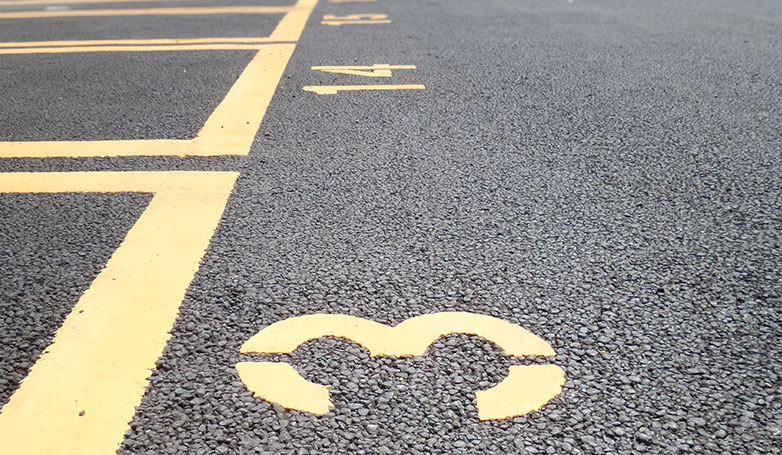
Painting your parking lot can make it safer and improve its aesthetic appeal, which is crucial to your business or home. You may probably want to open the parking lot to traffic as soon as possible after painting; however, it is essential to note that allowing it to dry appropriately has many positive effects. The typical drying time of asphalt paint is 30 minutes; notwithstanding, several factors influence the drying time. They include:
- Temperature
- The wind speed and the relative humidity
- The type of paint used (whether oil or water-based paint)
- The condition of the pavement.
The mentioned combined factors influence the speed at which the paint will dry. By determining these factors, you will fathom the time your new asphalt paint will dry. Irrespective of all these, it is recommended to contact your parking lot maintenance contractor as only they can provide you with a precise answer to how long should asphalt cure before painting.
And the time it would take the paint to dry.
Conclusion
If asphalt is not cured before you apply paint on it, it may peel off and adversely affect your pavement. Your asphalt pavement maintenance contractor should carefully select the type of paint to use (water or oil-based paint).
In all, whatever decision you want to take regarding your parking lot or driveway, always ensure to work in hand with a professional maintenance contractor. They know best and have precise answers to all your queries.


